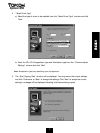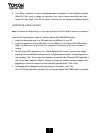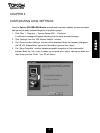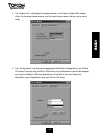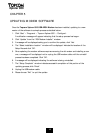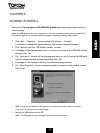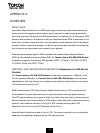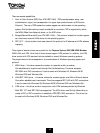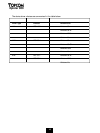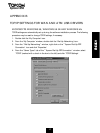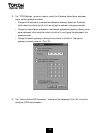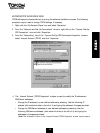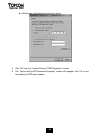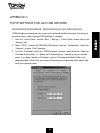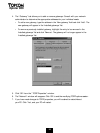
There are several possibilities:
1. Point to Point Protocol (PPP) Over ATM (RFC 2364) - PPP provides session setup, user
authentication (login), and encapsulation for upper layer protocols such as IP (Internet
Protocol). The use of PPP makes the modem appear as a dial modem to the operating
system. Dial-Up Networking is used to establish a connection. PPP is supported by either
the WAN (Wide Area Network) driver, or the ATM driver.
2. Bridged/Routed Ethernet/IP over ATM (RFC 1483) – This protocol makes the modem appear
as a local area network (LAN) device to the operating system.
3. RFC 1577 – this is another local area network like protocol for IP address and ATM address
mapping.
Three types of device drivers are provided for the Topcom Xplorer 850 USB ADSL Modem,
WAN, LAN, and ATM. Note that all three drivers support ATM protocol. In addition, the ATM
driver works with ATM services that are available in recent Windows operating systems.
The proper choice of driver depends on the combination of Windows operating system and
protocol.
1. WAN driver – this driver causes the modem to resemble a dial-up modem.
Call establishment is performed through Dial-Up Networking. This driver supports
RFC 2364 with PVC connections. It can be used with Windows 98, Windows 98 SE,
Windows 2000 and Windows Me.
2. LAN (RFC 1483) driver - this driver makes the modem appear as a LAN or Ethernet device.
Connection establishment is automatic. This driver supports RFC 1483 with PVC connections.
It can be used with Windows 98, Windows 98 SE, Windows 2000 and Windows Me.
3. ATM driver – this driver works in conjunction with ATM services provided by Windows.
Both RFC 1577 and RFC 2364 are supported. The ATM driver uses Dial-Up Networking to
create a PVC or SVC connection to establish a PPP (RFC 2364) connection. This driver can
be used with Windows 98 SE, Windows 2000 and Windows Me.
Xplorer 850
151515151515



